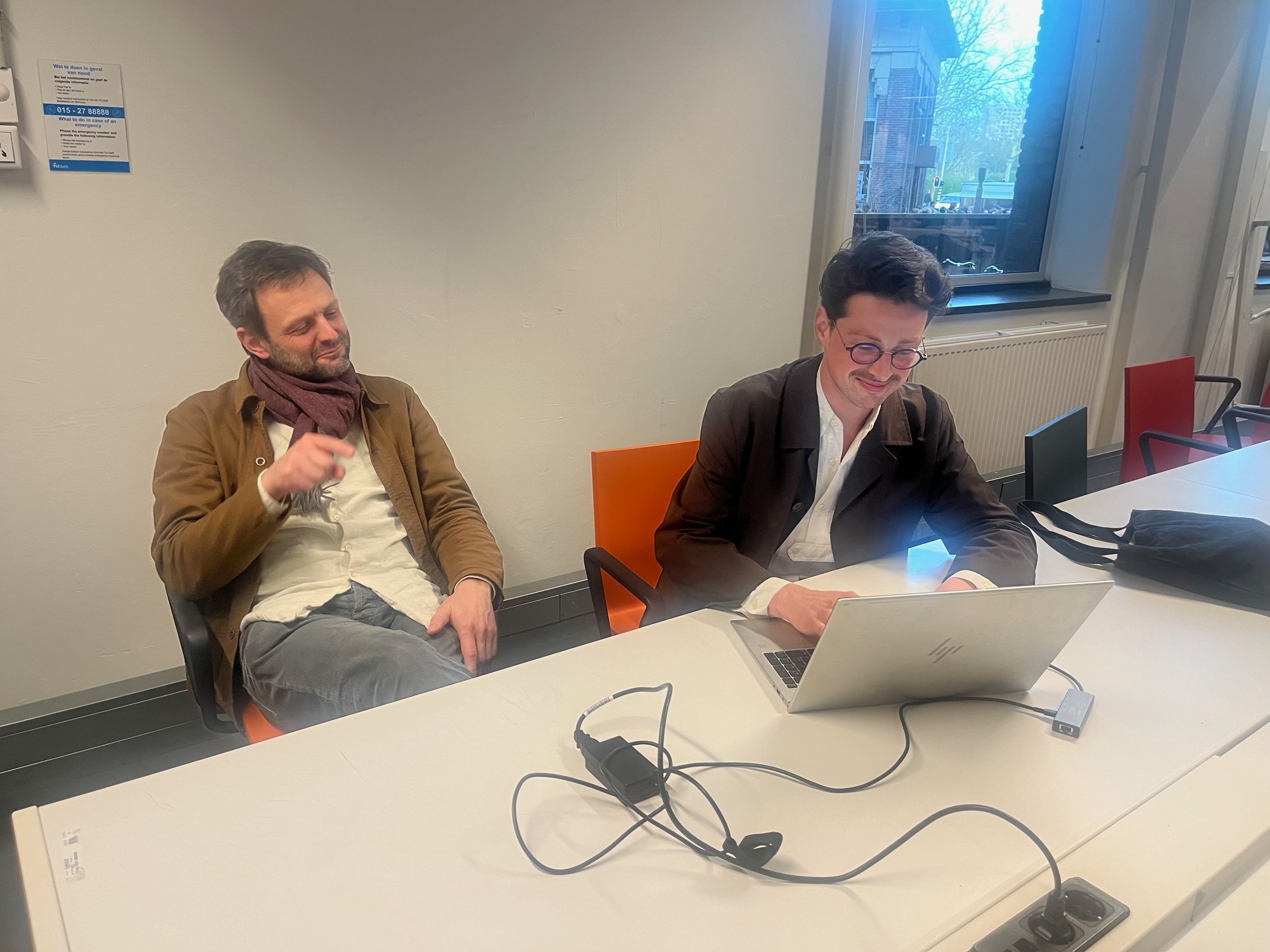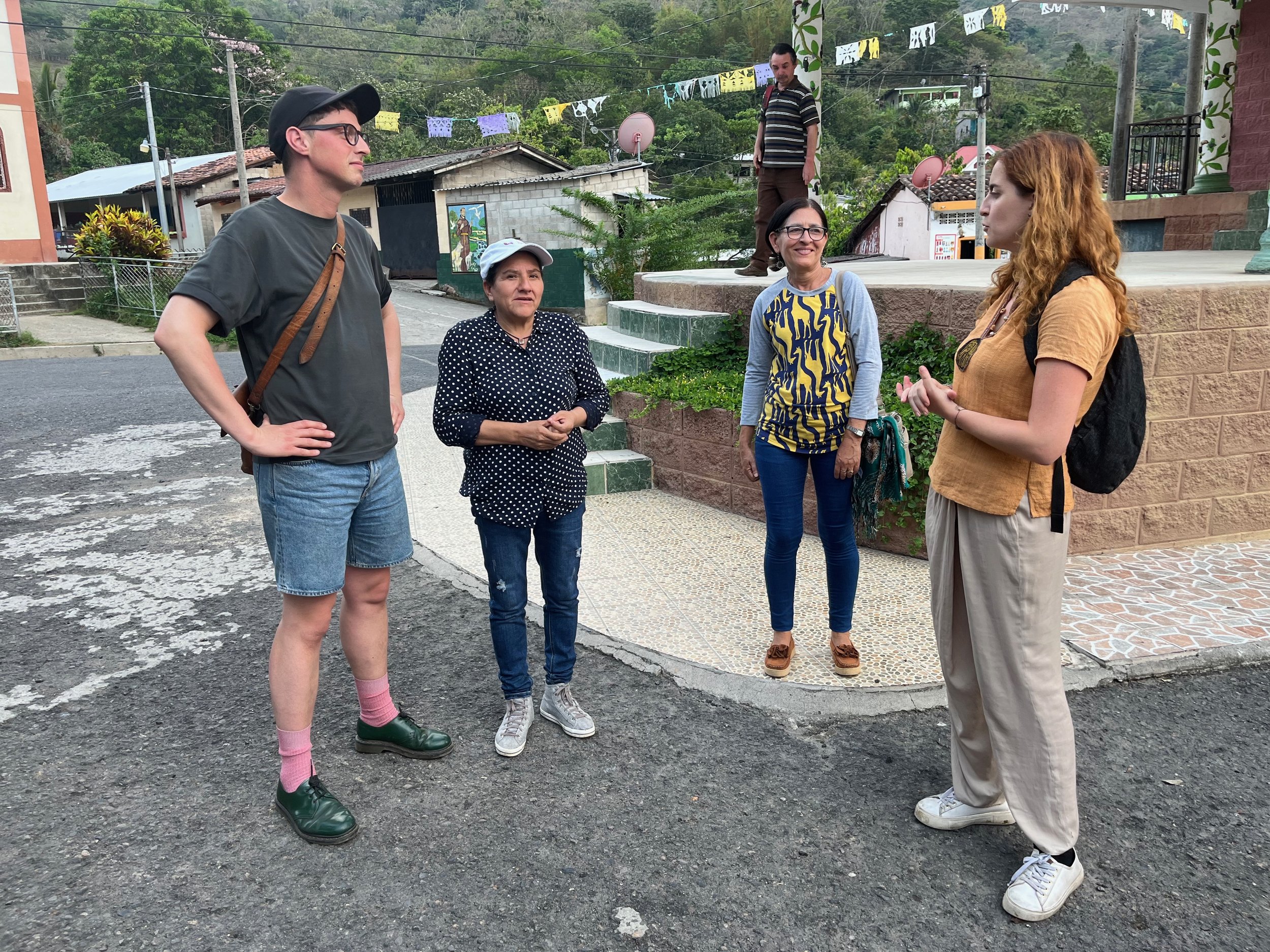Thomas Montulet, Ph.D. Candidate Architecture, KU Louvain
Here, There, Elsewhere: on the Architecture of Memory
This research is developed in a twofold manner, oscillating between theory and practice. Firstly, a theoretical framework allows to situate the memory of architecture as a topic witihin a vast field of philosophical and anthropological notions of space-time. Secondly, the architectural projects of the Surviving Memory in Post War El Salvador Research Initiative form an important part of the study material. These projects allow to bring to the fore possible approaches regarding the architecture of memory . How do we commemorate through space and objects? What does it imply to welcome the past into the present? How do we think of and design such spaces?
The theoretical part is researched through extensive reading and writing, and becomes operational through drawing and model-making. The practice is not an illustration of the theory, nor is the theory a result of the practice. Both parts exist autonomously within the research, complementing each other, producing fertile echoes between them.
Theory. The Memory of Architecture
The theoretical framework investigates three modalities of space-time, interrelates their fundamental qualities and traces how they inform the human condition. As language allows us to collectively construct, think and alter conceptions of time and space, architecture - understood as a human artefact - is at work at the heart of these conceptualizations. Architecture is put forward as a means of exploring these existential questions.
Our here is at once a place and a time, the immediate environment of the individual and forms the now in which the individual can act. There can be understood as 'everything that lies next to the here and now' (Verschaffel, 2016), and allows for what will happen, to happen or for what happened, to have happened. Finally, elsewhere is understood as the qualitative potential of the here.
Specifically, the research delves into three architectural types: the tomb, the ruin and the model as architectural embodiments of different conceptions of space-time. 'If being equals life, then death becomes unthinkable' (Derrida, 1975) is what the tomb, an opaque, inaccessible space tells us: death has always been at the core of life. The ruin, as a document of the past, stripped of all its contents, can be understood as architecture turning itself inside out. The model, a miniaturization of the object that suspends the diachronic sense of the here, establishes and obliterates simultaneously the relationship between space and body. Central to these topics is the question of memory.
Practice. The Architecture of Memory
A series of Surviving Memory projects in Chalatenango, northern El Salvador, serve as design explorations and constructive realisations. Amongst them, massacre and commemoration sites Las Aradas, El Higueral and La Laguna Seca, as well as memory museums in Las Vueltas and Arcatao form a series of designs that allow to delve deeper into the question of how the memory of the place and its people crystallizes into an architectural design. A specific perspective tries to understand the variety of the uses, how these places seem to oscillate between the universal and the specific, between the sacred and the profane.
The way of considering these architectural projects is twofold. The research traces how memory is situated and understood, how it articulates the places and commemorations, and how it functions when survivors and community members speak about the past, present and future. This is complemented by retracing how memory becomes operational in the designs and the construction of the specific projects.




